The One Quick and Easy Way to Slash the High Cost of Groceries
The news is not good: Grocery prices in the U.S. were up 11.8% in December 2023 compared with a year earlier. Translated to our everyday lives? Americans can still expect to pay up on their next trip to the grocery store. The cost of food is soaring in ways that are downright shocking.
Gone are the days when someone could walk into a grocery store and buy a dozen eggs for $1.50 or a gallon of milk for under $3. Instead, nearly every food group costs more than it did a year ago: grade A eggs are up 138%; margarine, up 43.8%; butter sticks, up 38.5%; all-purpose flour, up 34.5%; and spaghetti and macaroni noodles up 31.3%, according to the most recent Bureau of Labor Statistics (BLS) data.
What we’re experiencing is inflation—the cost of goods and services increasing faster than wages. The cost of the things you need to live are going up while your paycheck stays the same. That means you’re losing ground. Nothing ruins an appetite quite like rising food prices. Still, this situation is not without one reasonable, simple solution— guaranteed method of shopping that will reduce your grocery tab by at least 25%.
It’s a Game
Know this: Retailers are as nervous about inflation as consumers are. The way store owners deal with rising prices is to manipulate their customers into thinking it’s not so bad. Sounds harsh? Maybe, but we need to understand this: manipulation is just another word for marketing. It’s the way the game is played—the grocery game!
As consumers, we play the grocery game every time we shop for groceries whether that’s in-store on online. The retailers are our opponents. And trust me on this: Retailers have a playbook. They have a plan and they use every opportunity to get us to do their bidding. What we need is to take a peek into our opponent’s playbook.
Buy on Sale
There are myriad ways to reduce the cost of groceries from clipping coupons to using apps that compare prices—some even giving cash back. I encourage you to participate in all of those opportunities if that’s your thing. The bad news is that for some, that process is just too tedious to be sustainable. But not to worry:
There exists one quick and easy way to make your food dollars stretch so far you kick the snot out of inflation. Just one thing. Determine to only buy food items that are on sale—that you know are really on sale, not just prettied up to look like it. That’s the goal. And when you find a super sale, buy enough at the sale price to last until the next time it will be on sale.
Know your prices
It’s super important that you acquire a good sense of the regular price of the food items you buy. Or wish you could buy. For example, do you have a handle on what 80/20 ground beef is per pound in your area? Without that knowledge how will you know if $3.99 a pound is a sale price or the current price? That sign screaming “SPECIAL!!!” could be a trick. Knowing your prices is part of this strategy.
If you have a super, photographic memory, rely on it to keep tabs on the regular price of foods you buy. If not, get a notebook. Take notes.
My personal benchmark is that to be a decent sale, it needs to be at least 30% lower than the regular price. And when the sale price is 40% or even 50% off? Wow! Happy Dance time.
Live by the weekly ad
Every grocery store and supermarket out there produces a weekly ad. That’s in their playbooks. “Inform the customer but do so in a way that is to our advantage and tricks them as often as possible.” (Not a direct quote—my interpretation.)
How they distribute that weekly ad (U.S. mail? Online?) and where to find a copy of it in the store itself may vary from one store to the next. Chances are 99.99% certain you can find the weekly ad of any store that produces one, online at TheWeeklyAd.com. That weekly ad is going to be your ace in the hole. Reading and scouring your stores’ weekly food ads lets you know before you go. It allows you to sit in the privacy of your home without all of the marketing triggers that go on inside a retail store.
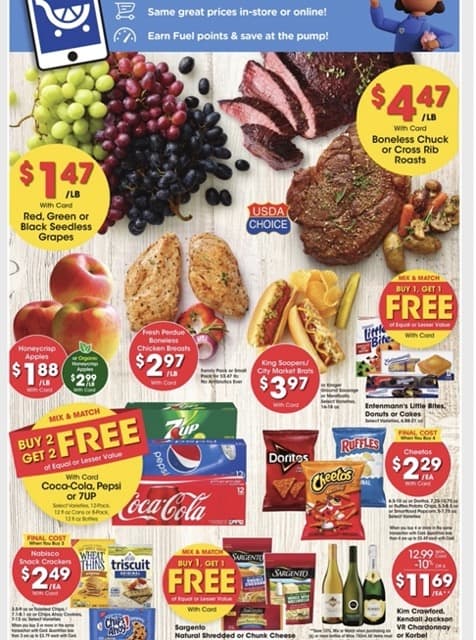
Page 4 Supermarket Ad 3-21-23
12-week cycle
Teri taught me about the phenomenon of the 12-week cycle. That’s the way U.S. supermarkets work. They rotate sales throughout the store so that everything gets its turn to be on sale during every 3-month period—what will be on sale this week, next week, and on through a 90-day or 12-week period. Diligent shoppers can track this phenomenon so as to be able to predict the sales.
In short, this means that during those 12 weeks, something in every aisle, every department, every section of that supermarket will be on sale—not every brand, but generally. And we’re not talking about phantom or phony sales that are nothing but an empty marketing ploy but at a major discount.
Some will be loss-leaders, which means an item with a sale price below the store’s cost for that item. Why would they do that? Why would King Soopers price hot dogs at 90% off the regular price? To get us into the store! To grab our attention. To make us so happy, we’re willing to pay full inflated prices for the hot dog buns, potatoes salad, and ice cream to go with them.
Our defensive move is to grab all the loss-leaders and resist being drawn into their ploy because we know we have hot dog buns in the freezer, picked up when they were a loss-leader a few weeks ago. That’s the way you win the grocery game.
Set your budget
You know how much you can afford for groceries for a week. Write it down. Lock eyeballs with that number. Commit to not going over. Bring cash.
Make your list
As you go through that weekly ad, make your list and make it specific. Again, know before you go. Go online and look at competing stores to get a sense of regular prices. The Internet lets us look at stores in neighboring areas, or even in big cities across the U.S. Every store worth its salt has its weekly ads on its website.
Store ads tell us a lot and help us to get a tighter grip on actual food costs, not those touted by governing officials and phony statistics.
Shop multiple stores
If you have the time to make the rounds to several stores, expand your horizons! For example, Walgreen’s carries an impressive number of groceries—even milk and dairy. Ditto for some dollar stores. Walgreens’ weekly flyer is a hoot, having joined the world of loss-leaders to draw us into their stores. Just don’t get drawn into their trap where you leave spending far more than you ever planned to spend—and you handed over the full price for many of those items. Grab the loss-leaders and run (well, make sure you pay for them first!)
No more brand loyalty
Given the 12-week cycle, and knowing that not every brand will be on sale once every 90-days, brand loyalty may have to go out the window. Keeping food costs relatively low is worth giving up that kind of loyalty. Unless of course, we can figure out how to make brand equivalents ourselves for just pennies!
How to get started
I know what you’re thinking: How do I wait for sales for the things we need this week, items that are not on sale? You won’t be able to be 100% compliant right out the gate. Determine to do the very best possible. That might mean waiting to buy beef, and substituting chicken (that is on sale) this week. Remember: Eat the sales! Plan your meals around what’s on sale.
If you have to pay full price for a few items this week, get the best price you can. If you can fulfill 75% of your true food needs for the week with items that are truly on sale, that’s fantastic. Go for 80% next week and on until you’re in a routine that allows you to truly live and eat the sales 100%.
Slip and fall hazard
Consider this a warning: It’s easy to go broke sale shopping. That goes for everything, not just food.
The sale is so great we load up on too much of a good thing. Just because whole chickens are $.99 each (yep, loss leader) that certainly does warrant buying one or two extra or the freezer. But 12? What?! You bought 20 whole chickens plus everything to go with them to invite all the neighbors over for a big backyard cookout (funny isn’t it how our minds can go completely unhinged in the face of a great loss-leader!)
See what happened there? You fell right into your opponent’s waiting arms. Besides, do you really have room to store 20 whole chickens? Bwaaaak!
Updated 1-25-24







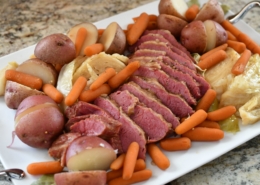

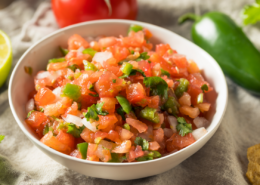

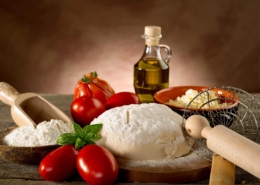
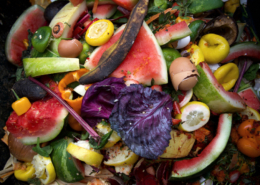


I use to write down the sales on Boneless chicken breast n then I stopped but you’ve motivated me to start writing them down again…but I do use what I have in fhe freezer which has allowed me to not shop for at least three weeks now and maybe it has been even longer than that. I used my food saver which if u don’t know what that is it is a vacuum sealer. It has saved me so much MOLLA!!
I use Ibotta, Fetch, Receipt Hog and Coupons.com to save money at the grocery store. I stock up on items when they are on sale and especially when they are free after coupons and ibotta. Usually I can buy up to 5 items so that is the amount that I buy at one time if it doesn’t go bad. If it is free I always buy it and give to neighbors or a food bank if we don’t need it (yes I know that I pay sales tax but I like helping people and I can afford to help people for that amount of money). Back when the stores offered overage on coupons I always bought stuff for free and donated it. Now there are not so many things but I still try to pay it forward whenever possible. Usually name brand is cheaper than store brand if you use coupons and match it with a sale. We don’t use Kraft mac and cheese but when they were 7 cents a box after coupons and rebates I donated them to the food bank etc. So think outside the box if you can afford to give back. We make most of our food from scratch now that I learned how to cook during lockdown. LOL
I never buy anything that is not on sale….and I mean nothing! Even the few items I buy at Costco I buy on sale and buy enough to last until the next sale. And when I do buy from wherever, I stock up.
Don’t you have to pay to shop at Costco?
Since you mentioned Teri from The Grocery Game. Is there anything similar to that service? I used if for years until the end and still miss it.
I’m with you right there … miss the Grocery Game so much. I am in touch with Teri and she has gone on to do amazing things completely unrelated to groceries. I still refer her Field Guide. It is as relevant today as the day she wrote it.